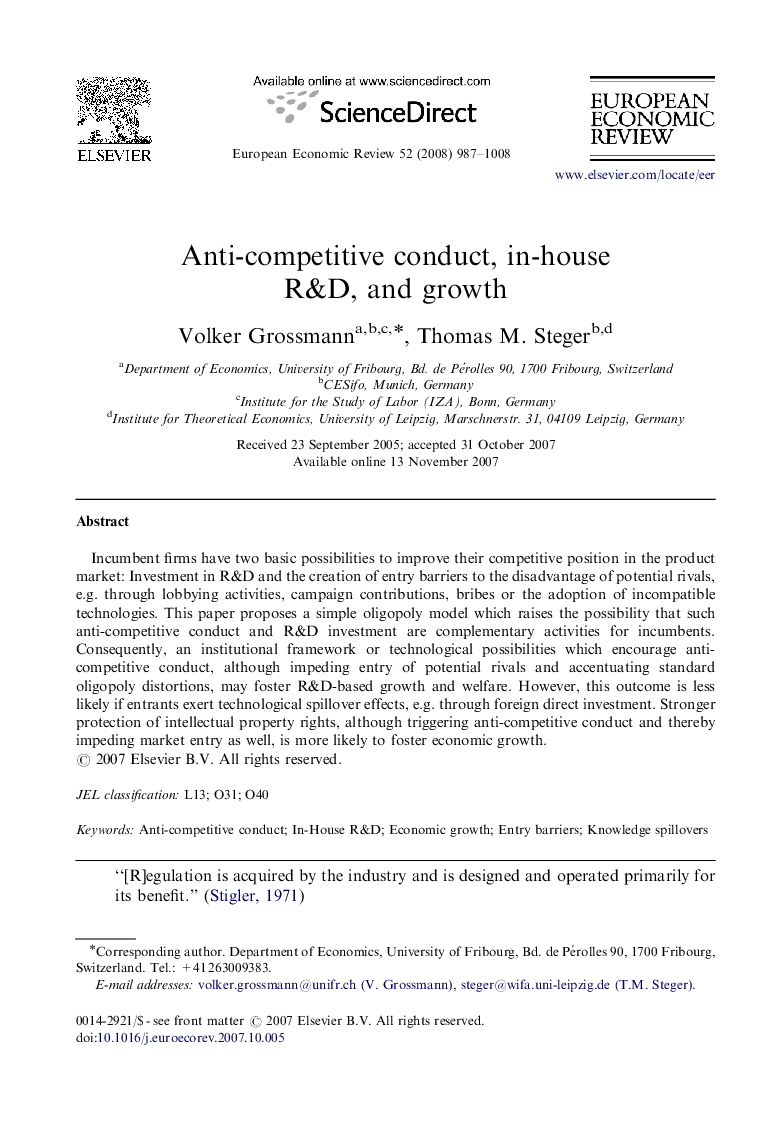| Article ID | Journal | Published Year | Pages | File Type |
|---|---|---|---|---|
| 5067312 | European Economic Review | 2008 | 22 Pages |
Abstract
Incumbent firms have two basic possibilities to improve their competitive position in the product market: Investment in R&D and the creation of entry barriers to the disadvantage of potential rivals, e.g. through lobbying activities, campaign contributions, bribes or the adoption of incompatible technologies. This paper proposes a simple oligopoly model which raises the possibility that such anti-competitive conduct and R&D investment are complementary activities for incumbents. Consequently, an institutional framework or technological possibilities which encourage anti-competitive conduct, although impeding entry of potential rivals and accentuating standard oligopoly distortions, may foster R&D-based growth and welfare. However, this outcome is less likely if entrants exert technological spillover effects, e.g. through foreign direct investment. Stronger protection of intellectual property rights, although triggering anti-competitive conduct and thereby impeding market entry as well, is more likely to foster economic growth.
Related Topics
Social Sciences and Humanities
Economics, Econometrics and Finance
Economics and Econometrics
Authors
Volker Grossmann, Thomas M. Steger,
